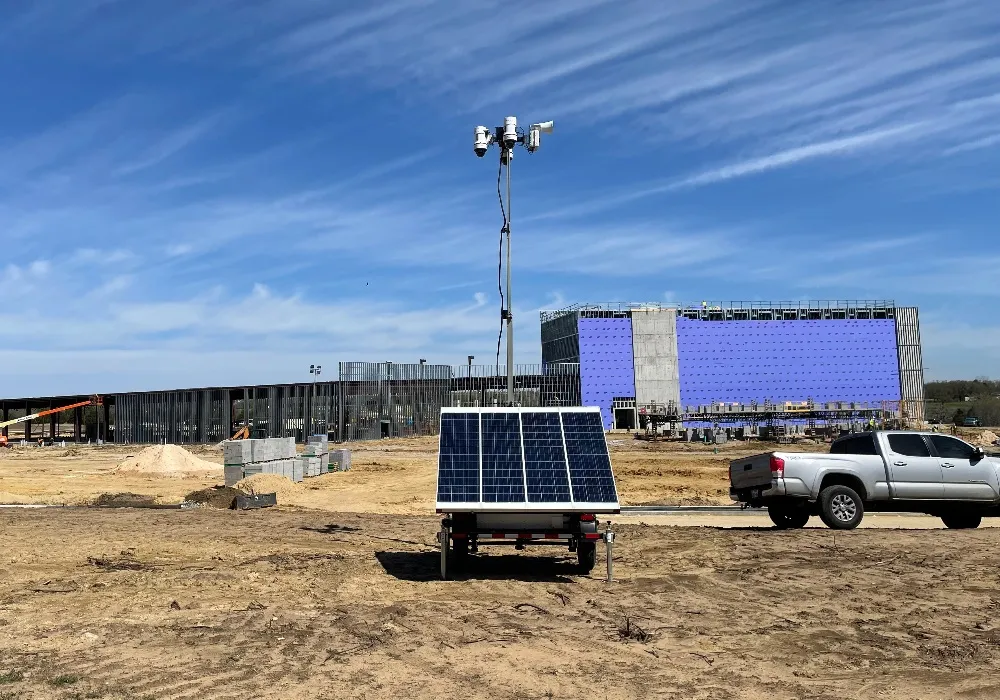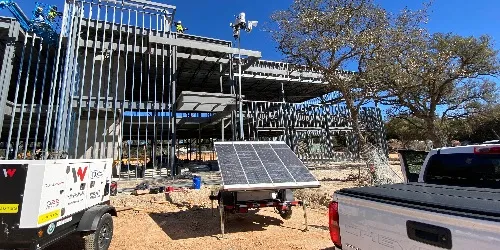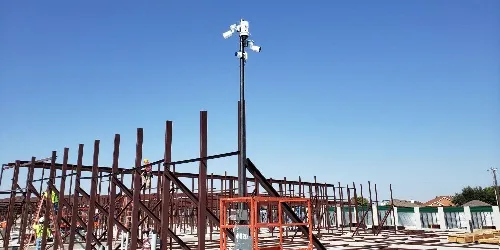With the U.S. Department of Energy reporting that copper theft alone costs a staggering $1 billion annually in losses, high-risk industries are left in fear of the impact this could have on them.
In this article, we explore the costs of metal theft, the wider impacts of this, and ways you can prevent this crime from impacting you.
What is Metal Theft?
Metal theft involves the illegal removal of property for its whole or partial metal content, which is then planned to be sold on as scrap metal or for other uses.
The most common targets for metal theft are:
- Copper
- HVAC units
- Palladium
- Wiring and piping
- Catalytic converter
- Platinum
High-risk industries for metal theft include construction job sites, critical infrastructure, historical buildings, and commercial property.
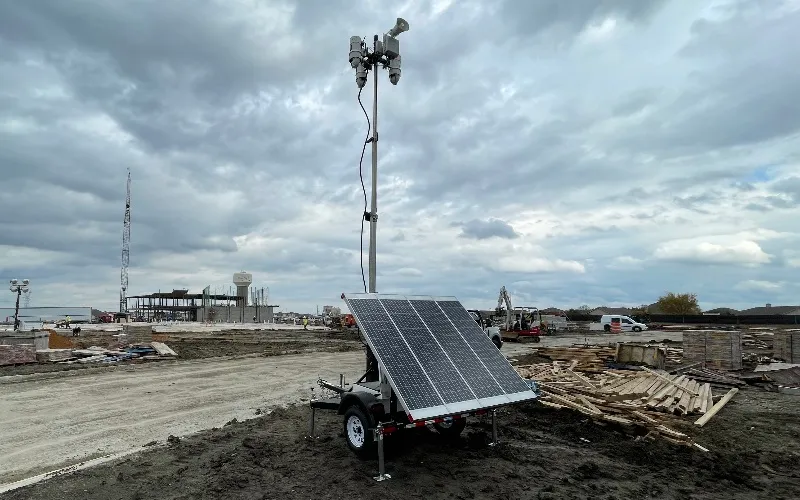
The Cost of Metal Theft on a Business
Metal theft poses a serious financial and operational threat to your business. Whilst the immediate financial loss may be limited to the stolen materials, equipment, or machinery, the true cost is much greater than this for you as a business.
Direct Financial Loss
Stolen piping, wiring, machinery parts, HVAC units, and catalytic converters represent an immediate financial loss.
As a business, you’ll be responsible for covering any replacement or repairs fees, but also any labor involved in this.
For large machinery or stolen infrastructure, this can become extremely expensive due to their replacement and installation costs.
Operational Downtime
When essential equipment, machinery, or materials are stolen or damaged due to metal theft, this can lead to severe operational disruption to your business or project.
Depending on your industry, this could be catastrophic, leading to project delays that create work stoppage penalties or complete/partial loss of key services, leading to customer compensation.
For example, stolen wiring could pause production lines, cut power, and disable HVAC units.
From missed deadlines to lost revenue, operational disruption stemming from metal theft can add up quickly.
Increased Insurance Premiums
Insurance is there to protect your business financially in instances where you face monetary loss or damage in some way, repeated claims due to metal theft could result in higher insurance premiums.
Additionally, future insurers may impart stricter coverage conditions or in worst case scenarios, deny claims.
This will likely contribute to long-term financial strain and create tighter budgets for your business, in turn stunting its growth.
Reputational Damage
Metal theft displays signs of neglect to your site’s security, and if incidents of theft interrupt essential services to customers, there’s a risk of reputational damage on your business.
For industries like critical infrastructure, customers may choose to utilize other services, pulling the revenue away from your business and towards your competitors.
Reputational damage is easy to gain, but difficult to shake, and due to this can create long-term financial loss that may be unable to recover.
The Wider Impact of Metal Theft
Your business is often the immediate victim of metal theft, however, the ripple effect of such crime extends much further than this.
Below, we go beyond the monetary loss and explore the wider impact on metal theft:
Public Safety Risks
Some of the most common targets for theft rely heavily on metal to provide their services, therefore, if this is stolen or damaged, it essentially stops that service from working.
This includes copper wiring used for power cables, street lighting, and transport signaling.
Whether it’s a city-wide power outage that leaves vulnerable individuals with no access to heating or medical devices or a loss of street lighting that increases the risk of crime, metal theft can create dangerous situations with catastrophic consequences to public safety.
Depending on liability, your business could be held responsible for any public safety risks or damage to any individuals relating to metal theft.
Disruption of Essential Services
As well as the public safety risks caused by metal theft, it can also disrupt essential services such as electricity, water, and telecoms, creating widespread outages for thousands of customers.
For example, if a thief were to steal telecom cable lines, customers could be left without internet or telephone access. This can include the services of hospitals, emergency services of all types, and businesses.
Disruption to essential services like public utilities can lead to large compensation payouts, loss of business productivity, and equipment downtime of key services.
Sites such as Battery Energy Storage Systems (BESS) are remote utilities that can be readily targeted for metal and asset theft, causing major disruption to power supply.
Overall, this will contribute to millions being lost in economic output based on these disruptions.
Community and Environmental Effects
The business impact of metal theft is often more obvious than the community and environmental effects of such crime.
When thieves commit their crimes, they rarely think about the surrounding environment and will often damage nearby infrastructure. This can lead to water contamination from broken pipelines or chemical leaks.
This not only damages the environment, but can take months, if not years to recover from.
Environmental damage is monitored closely and there can be severe financial penalties for contaminating land or water, creating additional costs to your business and its reputation.
Alongside the environmental effects, metal theft can also contribute to community disruption if buildings or services they use have been targeted by the crime.
For example, if a local building has had its roof removed for metal, the building will not be operational until this is resolved and considered safe.
Strain on Suppliers
A surge in demand, mining struggles, and workforce shortage has placed a strain on suppliers over recent years, and metal theft is only worsening this.
As metal theft rises, more businesses require replacement equipment, machinery, and materials to replace what was stolen.
However, as suppliers face shortages on key metals like copper, nickel, and steel, crime like this only creates more difficulties for suppliers to fulfil the increasing demand.
It is also expected that over time, the shortage of resources may lead to longer replacement or repair times, meaning that metal theft creates longer term impacts than already caused.
Economic Burden on Taxpayers
When public infrastructure is stolen from or damaged, any replacement, repair, and installation costs will often fall on Government departments responsible for a specific area or service.
Ultimately, taxpayers foot the bill as the contributions made help to fund public services, which includes supporting the replacement or repair of stolen metal from public infrastructure.
This cost of replacement or repair will often outweigh the cost of the stolen metal in the first place, creating a substantial burden to the economy when it occurs.
The Reasons Behind the Rise in Metal Theft
In Fort Worth, Texas alone, they reported a 53% overall rise in metal theft cases citywide, but this story is similar for many other States and cities across the US who are also facing a rise in the crime.
In order to improve the prevention methods your business or site has in place to protect itself against metal theft, it’s beneficial to be aware of the reasons behind the rise to help target your response to this:
-
Rising metal prices, leading to greater profits for thieves when reselling it
-
Ease of resale through scrap yards as they require minimal verification
-
Vulnerabilities in infrastructure due to exposed wiring, pipes, and metal structures
-
New sophisticated tactics from organized crime gangs and theft rings
-
Social and economic pressures are driving individuals to steal in order to survive
-
Enforcement gaps meaning penalties and legal consequences are low in comparison to other crime
-
Heavy reliance on metal within critical infrastructure meaning there’s high volumes of it to steal
Over the years the rise in metal prices, particularly with copper, has contributed heavily to an increase in metal theft. And with prices predicted to only increase, this is likely to become an even greater issue across the US.
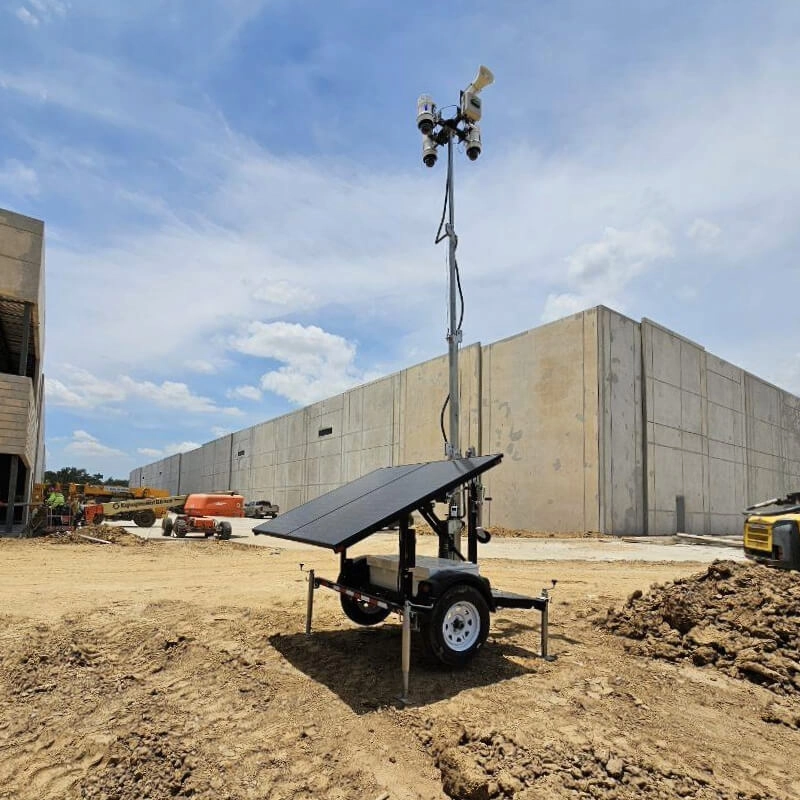
How Your Business Can Prevent Metal Theft
With high risks of severe financial and wider impact as a consequence of metal theft, it’s paramount for your business to prioritize its security, so you don’t become their next target.
Having over 20-years experience in surveillance solutions and supporting our customers with this, we’ve formed four simple steps you can take to protect and prevent against metal theft:
Increase Physical Security Measures
Physical security tends to be the most effective method of prevention in relation to metal theft as it works to both visibly deter crime and minimise your site as a target.
Perimeter fencing is commonly used with critical infrastructure and other projects as this often creates a visible criminal deterrent and makes unauthorized entry more difficult.
Security guard patrols are also popular because as well as working as a visible deterrent, they can also intercept and prevent crime if they are present at the time of the attack.
However, both perimeter fencing and security guards face gaps in coverage, and your business or site cannot afford this, especially with criminal tactics developing like they are.
That’s why many are turning to mobile surveillance solutions as they work as both visible deterrents and live monitoring capabilities that proactively prevent crime and record any incidents for evidential purposes.
Advanced systems like surveillance trailers even offer a more flexible solution that can be moved to suit your security needs like a developing site, new blindspot, or completely different site location.
Before deciding on any measures, review your needs and threat level to metal theft. You may find you require multiple security measures to ensure complete site coverage.
Review and Update Safety and Security Policies
You ‘ll already have safety and security policies in place, however, if you haven’t reviewed these in the last year, they may no longer align with your requirements as a business.
This can place your business or site at risk to external threats, one being metal theft.
Safety and security policies are designed to ensure your business or site remain protected, including risk assessments, incident response procedures, employee training support, and a list of measures currently in place.
All of these elements play a key role in keeping your business or site secure against metal theft, therefore, if one or more policies are outdated then you may be missing areas that require coverage.
To reduce this risk, you should carry out annual reviews at minimum of all safety and security policies.
This means completing new risk assessments, checking employee policies, retraining staff as needed, updating incident response procedures, and reviewing the measures you have in place.
By reviewing these annually, you may capture new blindspots, emerging threats, gaps in employee training, and outdated systems that need updating.
Engage With the Community
Engaging with the local community is beneficial for multiple reasons. From informing them of the dangers of engaging in metal theft to encouraging them to report crimes of this type, having a good bond with your community can provide more protection to your business than you think.
You should consider the best ways to engage with them, whether it be via social media, placing posters in the local area, or having Law Enforcement speak directly with members of the community.
Before any campaign, establish the message you wish to convey and ensure that you have the correct wording and engagement technique.
The general public can be extremely helpful in reporting crime, so don’t forget to make this process clear for them. If you have a witness, this will help with any legal proceedings.
Integrate Technological Advancements
We’ve all heard that technology is the future, and this is particularly relevant to the world of security.
The introduction of AI has allowed many security solutions to develop in a way where they no longer provide a static form of protection, and instead can be customized to your needs, providing an enhanced response to crime.
Metal theft is increasing in popularity as a crime, with Organized Crime Gangs (OCGs) now carrying out mass attacks on businesses and infrastructure sites, creating more damage than ever before.
Therefore, your security needs to become smart to manage the new threats and tactics presented to it.
This means looking beyond the products themselves, and considering the services that back them.
Some advanced security systems utilize the power of AI to allow for enhanced integrations like LPR solutions, Time Lapse Video, thermal imaging, and remote monitoring services. All of which help customize your incident response to the threats presented specifically to your site.
These all connect to one unit, helping to minimize suppliers and boost your business or site’s protection.
WCCTV: Cost-Effective, Proactive Prevention Solutions for Metal Theft
We’ve supported various sites and businesses in protecting themselves against metal theft through our cost-effective, proactive prevention solutions.
From our Surveillance Trailers to our Pole Cameras, all of our solutions are backed by a fully-managed service that can be catered to your needs.
We offer temporary and targeted surveillance that offer various integrations like LPR solutions to capture license plates on-site and Time Lapse Video to film a short video of a critical infrastructure construction.
Most importantly, the core of our solutions help maximize crime prevention, even the most challenging types, like metal theft.
With growing incident figures your business must stay ahead of the criminals and with over 20 years of experience, WCCTV are here to help with this.
Speak with us today to find out how our proactive prevention solutions can help prevent your business or site from becoming another victim of metal theft!
